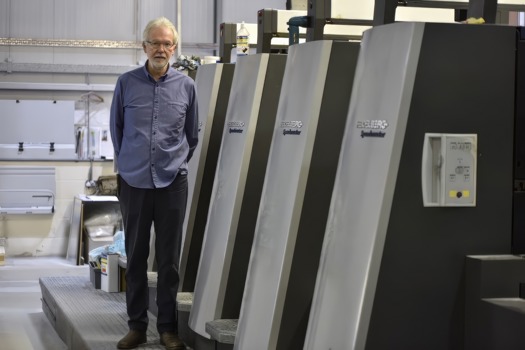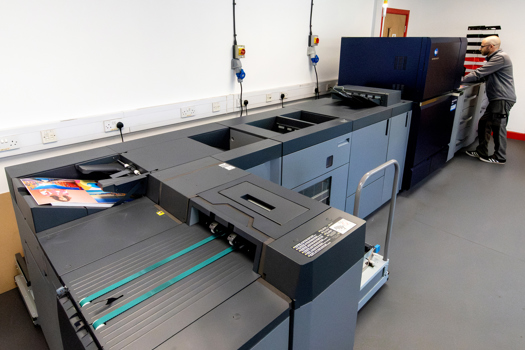According to the IMRG Capgemini e-Retail Sales Index, the online retail market has continued to see steady growth, in October this year, recording a solid 15% year-on-year increase. This follows a strong August and September, when online retail spend recorded 18% and 20% year-on-year growth respectively. So far this year the index has recorded a 16% growth in online sales, compared to 13% during the same period last year.
And the latest projections for online retail suggest further solid growth is in store. In retail analyst Mintel’s latest projections, online sales this Christmas are expected to be up 16% year-on-year – this equates to an overall market share of just over 12%, or almost £5bn.
While it’s clear that online represents a significant growth opportunity for traditional retailers, pure-play online operators and brands, for the latter group in particular online also presents a significant challenge. That’s because unlike in a bricks-and-mortar store, where POS displays and packaging play a vital role in influencing purchasing decisions, products are reduced to thumbnails and there’s no enhanced listing position on shelf or gondola ends. All products are equal.
It’s a problem succinctly summed up by Cathy Barnes, professor of retail innovation and director of the Faraday Centre for Retail Excellence at Leeds Metropolitan University, who recently hosted a conference for brand owners looking at the packaging challenges that online retail presents.
“To a degree, larger brands have some control on how their products are displayed in store, but they have none of that control online, or if they do it’s in its infancy. It creates an interesting dilemma for brand owners,” says Barnes.
New challenges
So what packaging design and print techniques can brands employ to ensure their product stands out and what role can printers play in solving this dilemma?
Before looking at how brand owners can make their products stand out online, it’s first important to address the question of whether or not products advertised online need any packaging at all (beyond the most basic packaging that protects and preserves the product). It’s a question that’s quickly dismissed by Benjamin Punchard, global packaging insights director at Mintel.
“The packaging is the cue that helps the consumer differentiate between options,” says Punchard. “It is also where the brand recognition resides and it is often that branding that consumers are looking for in a purchase, as that branding is a proxy for quality or efficacy, etc, and so it remains important to show the recognisable pack.”
“The brand still wants to build brand loyalty and to persuade the consumer that they have made the right decision in buying that brand,” he continues. “It may be that this in fact adds a need to the ‘discovery’ moment of the pack in the home. As the consumer doesn’t get to find out about the brand/values/attributes to the same detail when shopping online as they can in store, perhaps when the product is delivered and as it is being unloaded or used for the first time this becomes a new ‘first moment of truth’, and packaging will need to reappraise everything it knows about that communication moment in store in order to make sure that the same impact is made in the home.”
Punchard also adds that, given that much of the functionality of a product is delivered through the packaging, just because a product is bought online doesn’t diminish the importance of packaging functionality in the home.
Which is not to say that brand owners and retailers aren’t giving serious thought to how the packaging of products sold online might differ from in-store packaging. What remains to be seen at the moment is just what the upshot of this reappraisal will be, with little evidence to suggest that brands have started to do anything in this area just yet.
So how are brand owners and packaging specifiers likely to experiment over the coming years?
Firstly, it’s important to point out that although the way brand owners choose to market their products online will inevitably differ wildly, the core values of the packaging are going to remain the same, so ‘visual attributes’ – or put in layman’s terms, a brand’s colour, shape and logo – will still remain incredibly important.
“They are key to the consumer’s navigation and enhance the ability of an online shopper to find their desired brand,” says David Howlett, director at global consumer market research agency MMR Research UK. “In store, products can be displayed in full and in 3D,” says Howlett. “However, in an online scenario the majority of retailers are still using 2D images. The challenge for packaging online is the loss of the 3D structural equities as well as the tactile elements. This means that in an online situation, retailers and brands need to ensure packaging, POS and promotions more effectively reflect the colour cues and logos of the brands to create standout and recognition.”
One potential approach brand owners may start experimenting with is simplifying the pack and stripping it back to basics, says Punchard.
“With online pack pictures often being quite small and low resolution, then perhaps, yes, there is a case for simplified pack graphics with less information and bolder logos and graphics,” he explains.
That said, Punchard argues that this approach could be too “simple” a reaction to the problem. “Much of the design of packaging has focused on becoming eye-catching in store. What consumer behaviour experts need to find out now is how this changes when shopping online and to create the design and graphics rules for this space. That might not be as simple as a big logo and simple graphics.”
A potential option is for brand owners to adopt a dual-track packaging approach – one for online only and one for in-store. It’s an idea advocated by Rudy Martinez, head of concept design Europe at ASG Spark!
“Ideally packaging in-store and online would be different,” says Martinez. “At the moment, for logistics reasons and due to technological constraints, packaging is still very much the same, but maybe brands will start to slowly move in this direction.”
Another option is to enhance the brand experience when the product is delivered. Online businesses, like fashion retailer Matches, have already perfected this art. The company sends its beautifully packaged products out in a robust, highly decorative box complete with tissue paper. Martinez believes that other brand owners should follow suit.
“The second ‘moment of truth’ – what happens after the purchase, when people get to interact for the first time with their product and its packaging – is increasingly becoming important. When people receive their product through the post, what’s important isn’t so much the graphics on the packaging, but the whole brand experience.”
Of course the other option for brands looking to differentiate the way that they present their offer online would be to simply take their product out of the pack altogether, suggests Cathy Barnes.
“Visuals are very cheap and easy to create, whereas different SKUs of packaging are very expensive to create so perhaps we should be thinking a bit more creatively here,” says Barnes. “The picture that you see online needn’t necessarily be the same as you see in store. It has to be recognisable as the same brand, but it doesn’t need to be the same image because the buying signals are different online.”
Different needs
Putting a picture of the product online instead of a picture of its packaging isn’t going to work for every category (or be good news for packaging printers). For instance, a shot of a mouth-watering, piping-hot readymeal served on an ornate plate is going to work much better than a shot of deodorant being sprayed. However, some products could significantly benefit from adopting this approach.
Whatever route brand owners ultimately opt for, it’s clear that printers are going to have to play a key role in the decision-making process. Andy Kyle, sales director at Colour Five, believes that printing companies like his have the expertise to help brand owners make these dramatic changes as painlessly as possible.
“The role that printers can play in helping this transition is to ensure they are a flexible, creative resource,” says Kyle. “We aim to be constantly aware of new methods, processes and materials that will enhance our clients’ creative impact.”
The projected continued growth of online sales will inevitably present an even greater challenge to manufacturers in the future. But there could also be rich rewards for those pioneering brand owners – and their print partners – who recognise that regardless of whether or not a product is in-store or online, packaging will still play a key role. It’s just not clear at the moment what that role will be.










